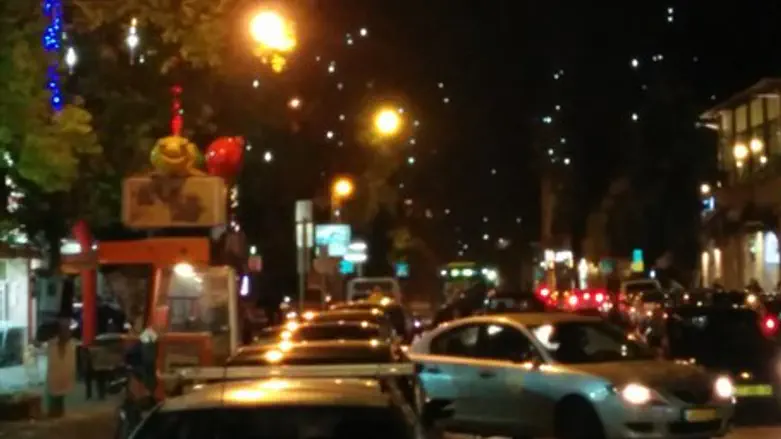
To a passerby, it would appear that Emek Refaim street in Jerusalem is near collapse. With the recent closure of over 10 restaurants in a two month period, empty storefronts, many other businesses are feeling the burn of the near empty street and the high rental fees.
While worried Jerusalem residents bemoan closure after closure of yet another beloved restaurant such as Soyo, Moshava 54, and Cinnabon to name but a few, many wonder whether or not the current state of affairs spells the end for the once thriving economic and cultural hub of the city.
Ginot Ha’ir Community Council together with City Council member Einav Bar (Hitorerut Party) have been creating cultural initiatives as well as beautification projects to help the distressed street. “Emek Refaim in the past few years has been suffering, especially the businesses," said Tamar Klein, Culture Director for Ginot Ha’ir Community Council. “With the center of the city and the first station becoming major centers of culture in the city, as well as two major movie theaters opening up, the street has been dwindling.”
She attributed a portion of the problems to exorbitant rent fees that business owners have to pay to the private landowners on the street as well. “Additionally the rent has been very high as the owners of the buildings are private. That is not necessarily something that the community council can help with, but we know that the city has plans to try to help in that area as well.”
The community center in conjunction with the city council has earmarked a good amount of funds to help give the street a lift and bring people back to the street.
“Every Monday throughout the months of November and December we have been bringing entertainers, performers, and bands, to perform live on the street,” said Klein.
The two governmental bodies also organized a Hanukkah fair called Tzeva v’Ketzev, or Color and Tempo in English.
Another project which has taken place in the area of beautification was designating the street as a street of art. “We’ve invited artists from around the city to come and beautify the street. So far we’ve dressed up the street for winter, in bright colours utilizing a special material. This was the work of Talia Adi, a young and aspiring Jerusalem artist who graduated from the Betzalel Academy.”
The art project consists of bright material being wrapped tightly around trees, electrical poles and guardrails, to show off their contours and bring a high amount of energy and color to the street. “There has been a very big response on social media with people posting pictures of themselves visiting and photographing the street,” said Klein.
Another, newer project that the city council has undertaken is a tree based lighting project. The city has hung lights in trees up and down the street which cascade to give the impression of rain or water falling in the trees themselves. While some might consider it an eyesore, others seem to be enjoying it according to Klein.
Klein explained that all of these projects have been put in place to help bring people back to the street. However the issue of the high cost of rent is something that is still prohibiting many businesses from surviving.
“We hope the people who come will sit in the cafes and participate in the businesses on the street. We can’t force the rent to go down, but we do know that the city is looking into options about how to help in that area as well.”
The wrappings of the street will remain throughout the winter months, and the lighting project will continue throughout the year.
Klein emphasized that neither of the projects would not have come to fruition without the Division for the Advancement of Businesses in Jerusalem and Member of city council Einav Bar.
“We are continually talking with the city about future plans to improve the situation on the street and in the community in general,” said Klein. “The street is an important cultural fixture in the city its ambiance, as well as the success of the businesses, is a subject close to our hearts.”